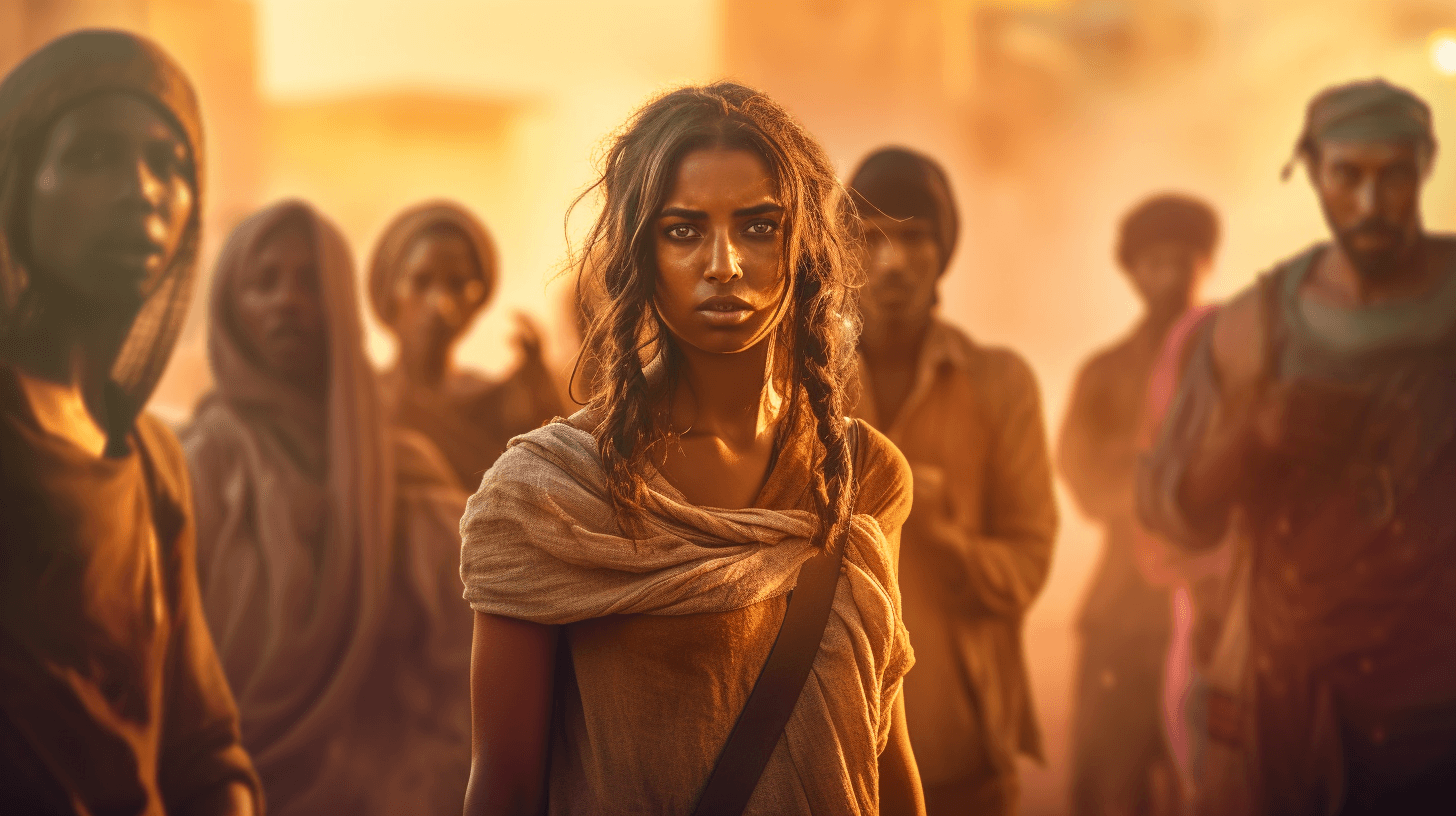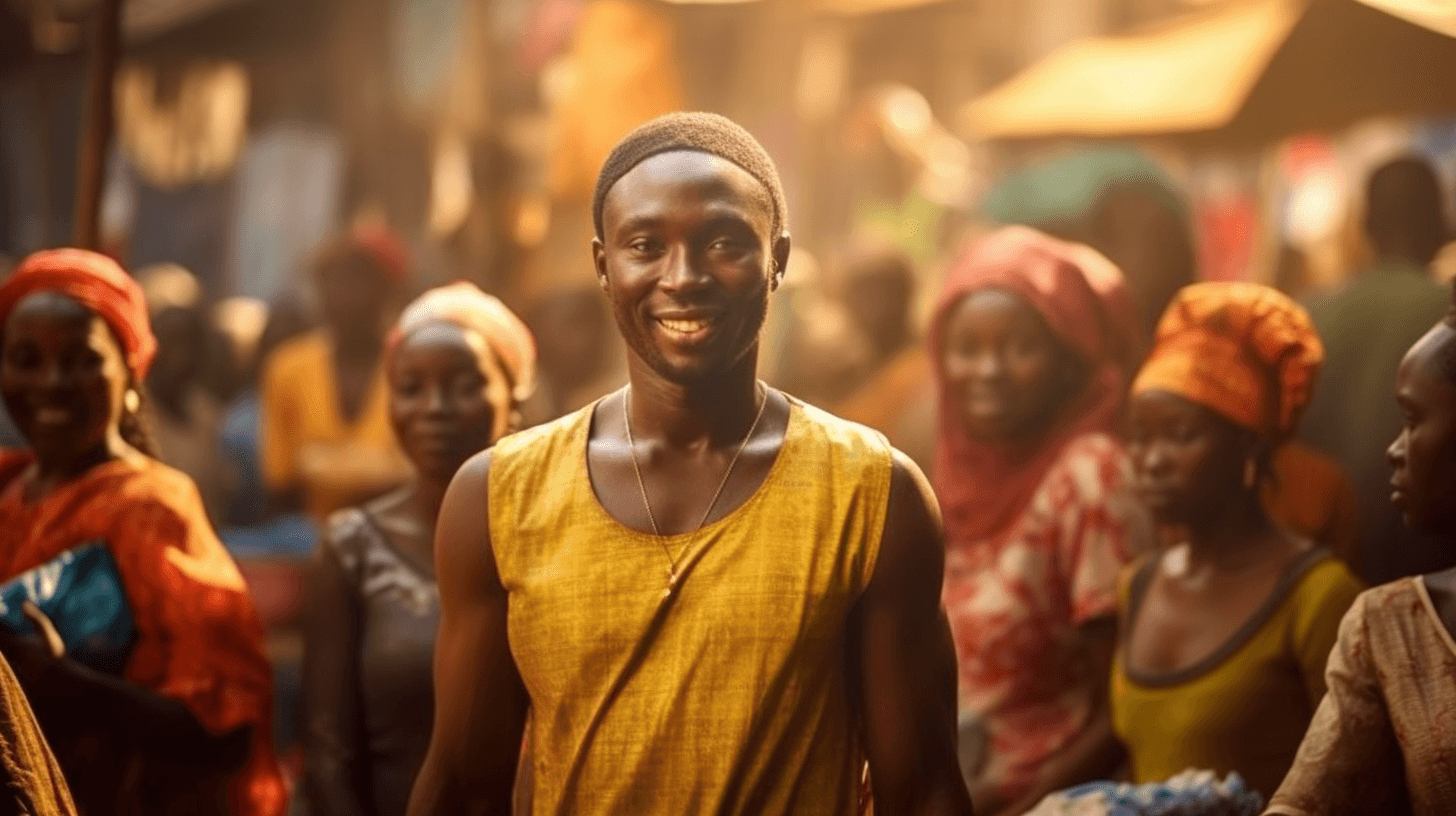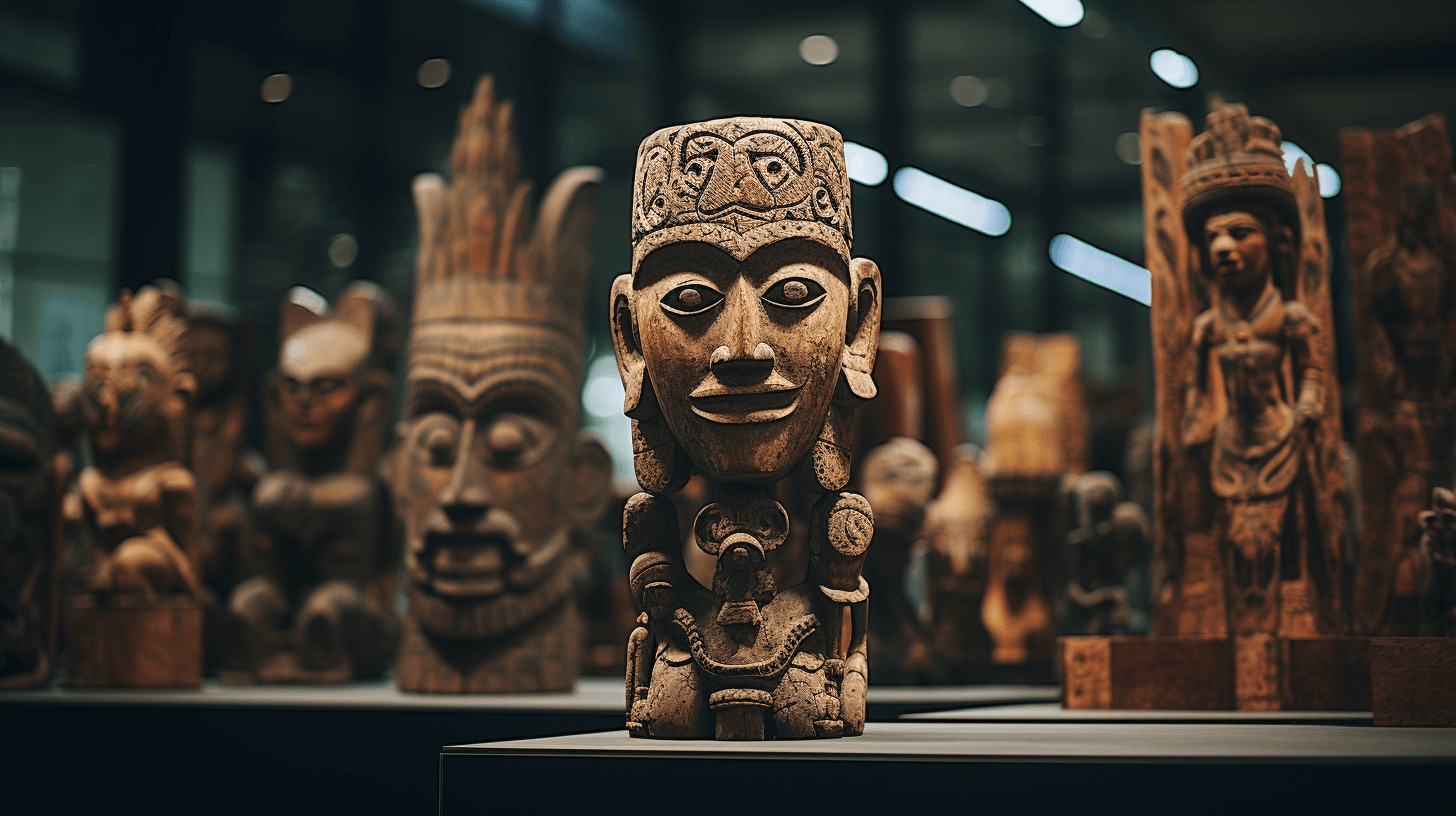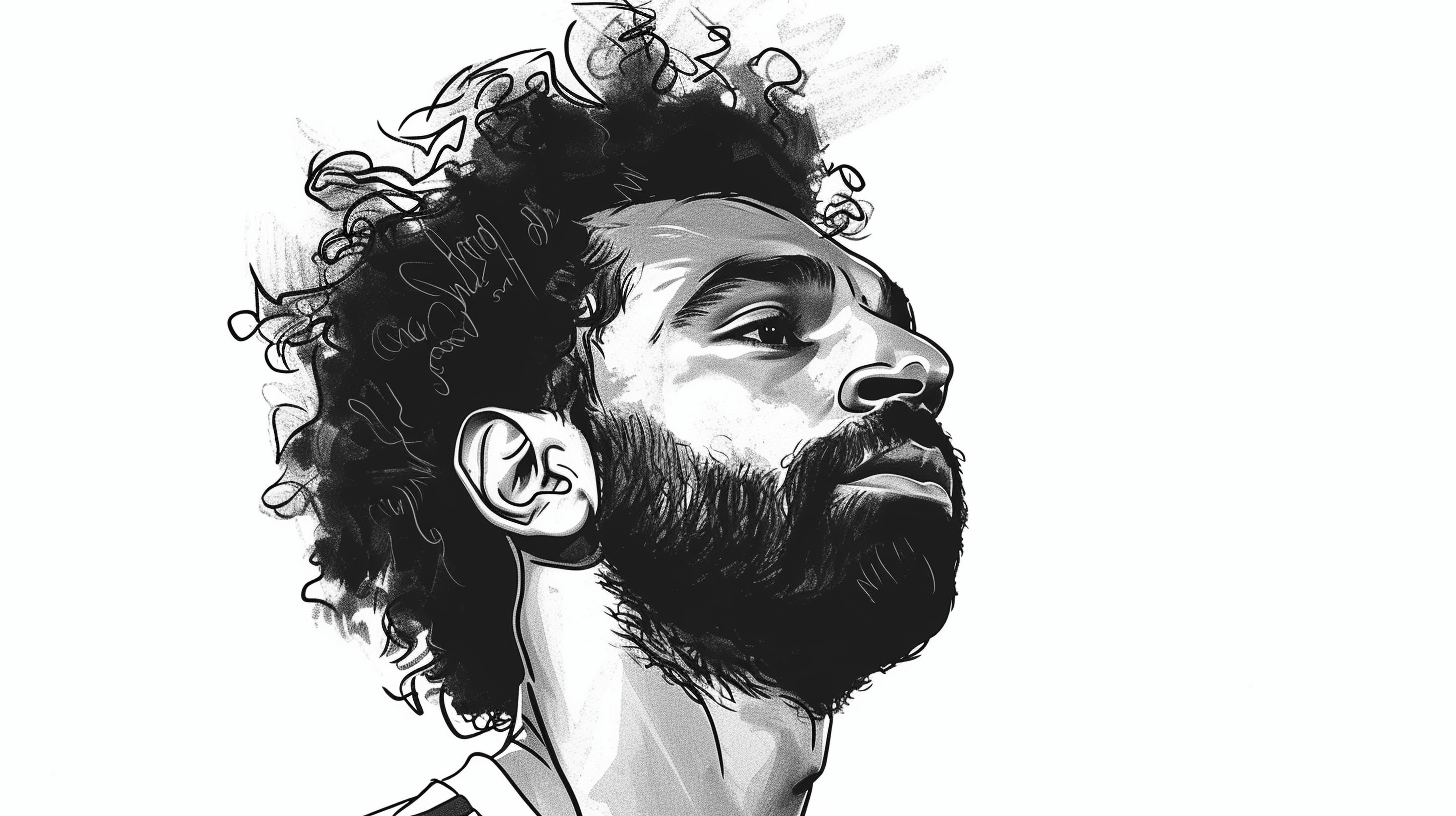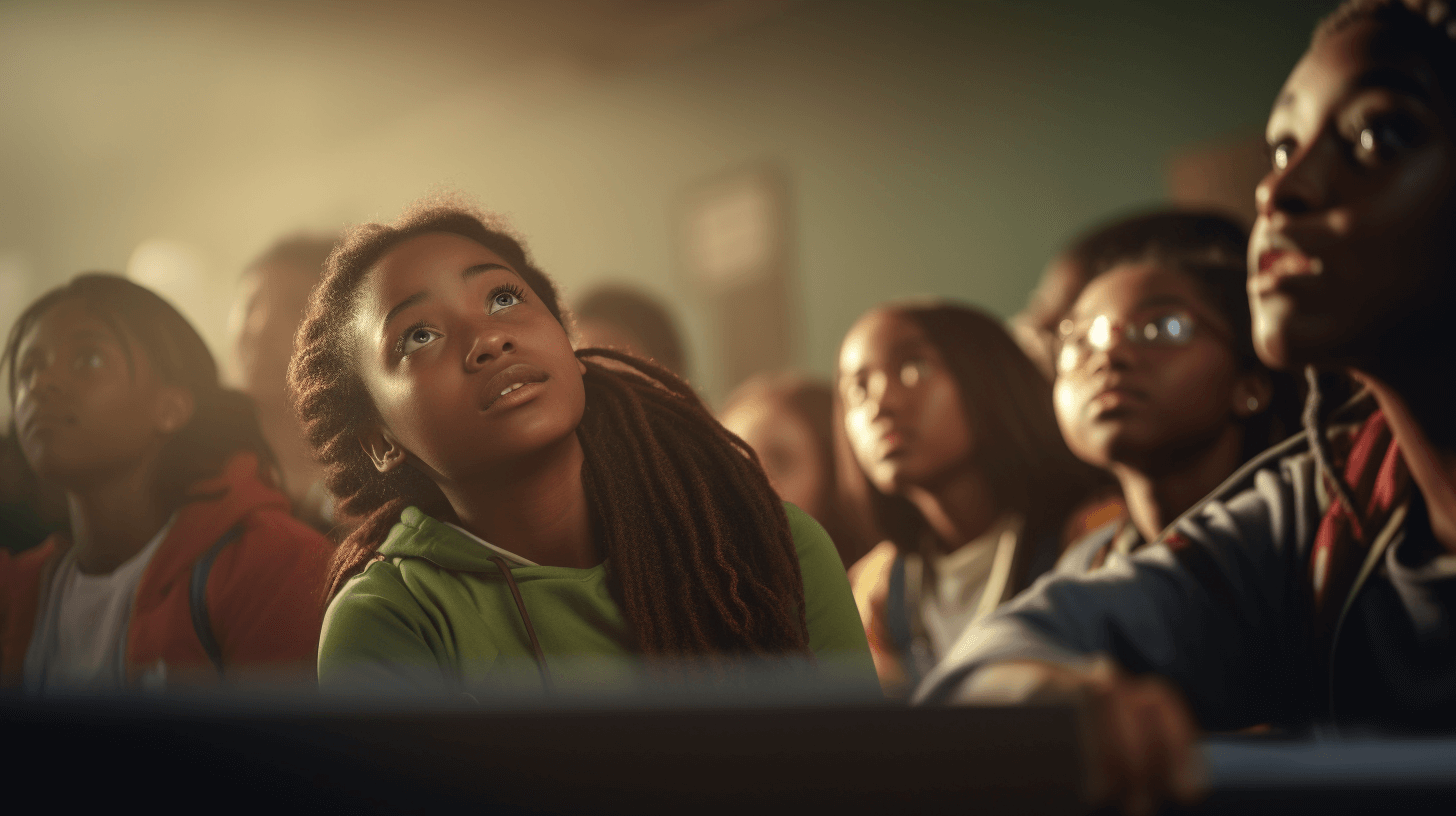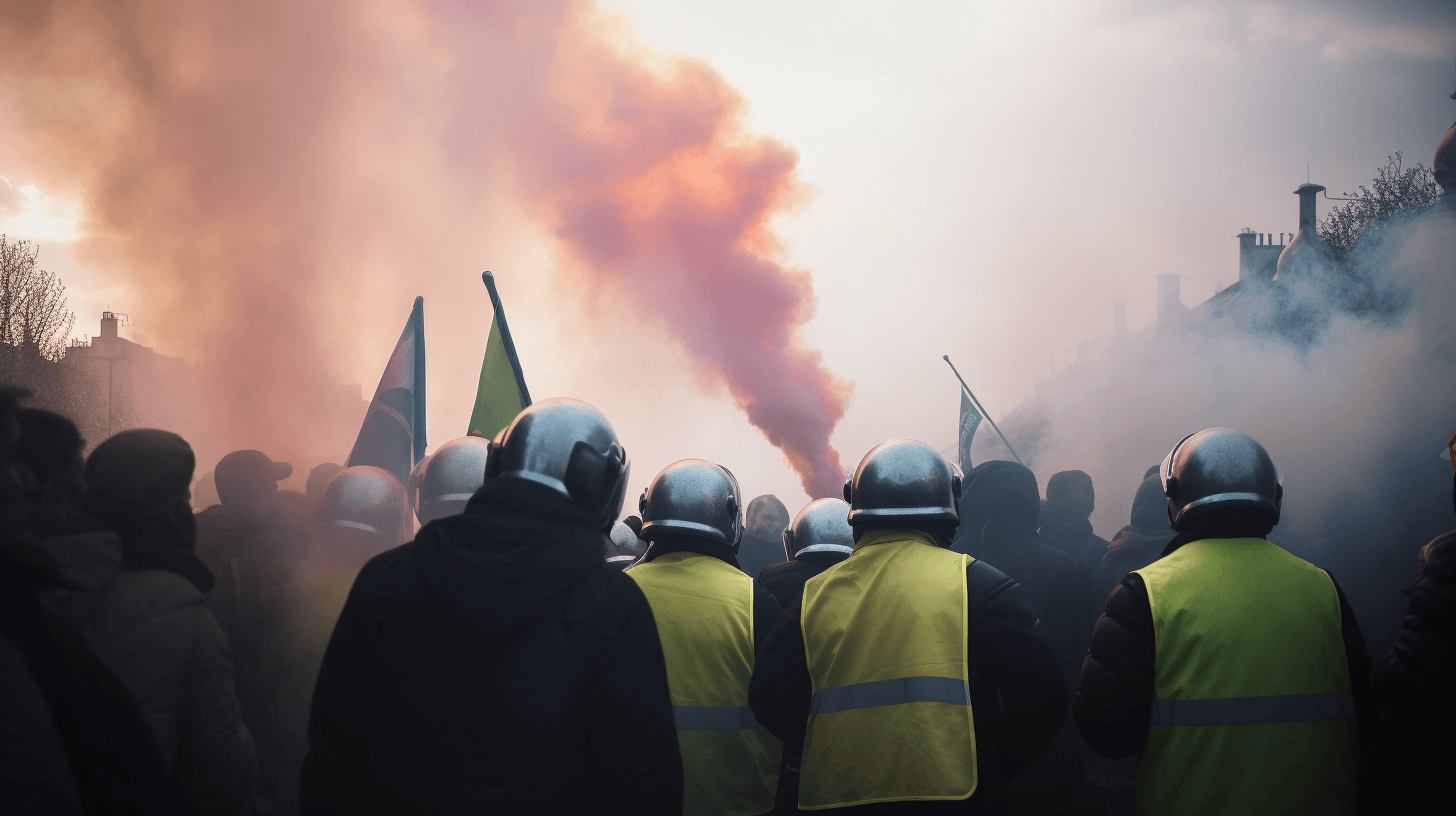🎨🔫 Insai Sudan War, Get One Noddah War Fo’ Art!
Planny Sudanese artists an curators wen run away from dea studios an galleries inside da capital, mak’n choke artworks no more kine, an making li’dat da art scene dat wen mean plenty fo’ da 2019 revolution. 🏃♂️🖼️🌆
On top da morning wen Sudan’s rival military forces start fo’ scrap, Yasir Algrai was in his studio in da middle of da country’s capital, get ready fo’ one more work day wit all kine paint colors an canvases. 🎨🖌️🏙️
Dat was April 15 — an’ aftah dat, for three days, Mr. Algrai stay stuck in his studio, hungry an’ thirsty as da battles wen rage outside his door on top da streets of Khartoum. 🚪🔫💥
Every day for planny hours, he wen hide scared as bullets wen go thru da windows of da building an da walls wen shake from da shelling go anykine. Wen get small kine quiet time fo’ escape, Mr. Algrai wen grab ‘um — but had heavy heart. 😰💔🕰️
“Couldn’t carry any of my art o’ personal kine stuffs,” Mr. Algrai, 29, wen say. He wen make it out, but wen leave behind his favorite guitar an’ ova 300 paintings all kine sizes. “Dis beef wen rob us of our art an’ our peace, an’ now we just trying fo’ stay sane in da middle of being kick out an’ death.” 🎸🖼️😢
Mr. Algrai stay one of planny Sudanese artists an curators who wen run away from dea studios an galleries as two general guys beefing making one mess of one of Africa’s biggest an’ most geopolitical important nations. 🏃♂️🎨🌍
Da beef, with da Sudanese Army controlled by Gen. Abdel Fattah al-Burhan an’ da paramilitary Rapid Support Forces led by Lt. Gen. Mohamed Hamdan, wen kill hundreds, kick out ova a million peeps, an’ left mo’ den half da country’s population in need of urgent humanitarian help. ⚔️🇸🇩😰
In da middle of all da crazy violence, planny scared dat da war goin’ wreck da city’s new art scene, mostly push by young artists who wen come out from da 2019 pro-democracy revolution an’ who wen start fo’ get regional an’ global attention. 🎨🔥🌍
One dozen Sudanese artists an curators in Sudan, Egypt an’ Kenya wen tell The New York Times dey no mo’ any idea about da fate of dea homes, studios or gallery spaces, dat together housed artworks worth hundred thousands dollars. 🏡🎨💰
“Da artistic, creative ecosystem goin’ stay broken for little while,” Azza Satti, one Sudanese art curator an’ filmmaker wen say. Artists, she wen say, “wen see da peeps’s need fo’ express themselves, fo’ feel alive, fo’ feel recognized,” an’ she wen add dat da war was gradually leading to “da erasure of dat voice, dat identity.” 🗣️🎨😔
Some of da meanest fighting in da capital wen happen in neighborhoods like Khartoum 2, where da city’s newest art galleries stay, or busy districts like Souk al-Arabi, where Mr. Algrai kept his studio. Get plenty robbery an’ looting in dose areas, with residents blaming da paramilitary forces who stay getting mo’ control over da capital. 🌆💥👮♂️
With museums an’ historical buildings attacked an’ damaged in da fighting, planny also worried about da pillaging of da country’s artistic riches an’ archaeological sites. 🏛️🔫💔
Da Sudan Natural History Museum an’ archives at da Omdurman Ahlia University both wen get significant damage or looting, da United Nations Educational, Scientific and Cultural Organization wen say in one statement. 🦖📚🔥
“Inside da war, da physical war, get one noddah war fo’ art,” Eltayeb Dawelbait, one veteran Sudanese artist who stay in Nairobi wen say. Mr. Dawelbait get planny pieces in Sudanese galleries an’ he scared dat Sudan’s artistic an’ cultural institutions goin’ get stolen same same like what wen happen in Iraq two decades ago. 🖼️🏛️🇮🇶
“Da artwork need fo’ be protected,” he wen say. 🎨🛡️
Aftah da country’s 1956 independence from da United Kingdom an’ Egypt, Sudan wen get one bustling art scene dat wen make famous artists, including Ahmed Shibrain, Ibrahim El-Salahi an’ Kamala Ibrahim Ishag. But in da three decades dat da dictator Omar Hassan al-Bashir stay in power, he wen use censorship, religious rules an’ imprisonment fo’ limit creative expression, making planny artists an’ musicians run away from da country. 🖌️🎨🚫
Dat wen start fo’ change during da 2019 revolution, when young artists wen pour into da streets fo’ paint murals on top walls an’ roads an’ call fo’ democratic rule. When Mr. al-Bashir was eventually removed from power in April of dat year, artists wen feel good about dea new freedoms an’ wen start painting an’ sculpting fo’ capture life in post-revolution Sudan. 🖼️🚀🎨
Among dem was Dahlia Abdelilah Baasher, one 32-year-old self-taught artist who quit her job as an art teacher aftah da revolution in order fo’ work full-time on her art. Ms. Baasher’s figurative paintings look at da oppression dat women face in Sudanese society, an’ over da years, her pieces wen attract da attention of curators an’ art custodians from Sudan, Egypt, Kenya an’ da United States. 🎨🖼️👩🎨🌍
Days befo’ Sudan’s war wen start in April, she an’ her family wen go Egypt fo’ da last days of da holy month of Ramadan an’ da following Eid holiday. Ms. Baasher packed planny small paintings fo’ da trip with da hope of selling dem, but left mo’ den two dozen large canvases at home. 🖼️🎨🛩️🏡
“I no can put into words or onto a canvas how I feel about dis war,” Ms. Baasher wen say in one video interview from Cairo. With her apartment building an’ neighborhood in Khartoum deserted, she said she didn’t know da fate of any of her belongings. 🏙️🖼️🎨😔
“We all just shocked an’ traumatized,” she wen say. “We nevah wen think dis goin’ happen an’ dat we goin’ lose da art movement we wen building.” 😲😢🎨
Her pain wen shared by Rahiem Shadad, who in da exciting, post-revolution days co-founded The Downtown Gallery in Khartoum. 🏬🎨👫
Mr. Shadad, 27, work with mo’ than 60 artists across Sudan, an’ was planning one solo show in Khartoum fo’ Waleed Mohamed, one 23-year-old painter. Mr. Shadad had also just finished curating an’ shipping artworks fo’ an exhibition scheduled fo’ travel abroad titled “Disturbance in The Nile.” Da show, which starts in late June, goin’ tour Lisbon, Madrid an’ Paris an’ feature Sudanese artists from various generations. 🎨🚢✈️
But since da fighting wen start, Mr. Shadad has focused only on making sure da safety of da artists an’ their artwork. 🎨🛡️
Hundreds of paintings an’ framed artworks stay stuck in the Downtown Gallery located in Khartoum 2. Da conflict also wen drain da savings of planny artists an’ denied dem a regular income, which mostly came from sales to foreign nationals an’ embassy officials who now been evacuated. 🖼️🎨💸💔
Fo’ help artists an’ dea families, Mr. Shadad, along with Sudanese curators like Ms. Satti, wen start a crowdfunding campaign dis month. Dey also thinking about how fo’ transport artists’ works to safety once relative calm takes hold in Khartoum. Despite a seven-day cease-fire scheduled fo’ expire on Monday, Mr. Shadad wen say he wen heard about robberies an’ harassment of civilians who venture back to da area near his gallery. 🎨🏦💰🕊️
“Da hub of da art scene in Sudan stay under a serious attack,” Mr. Shadad, crying, wen say in a phone interview from Cairo. “It is extremely emotional thinking dat da hard work dat we have done will just be lost.” 😭📞🎨💔
Fo’ planny artists, da conflict also wen deny dem access to their source of inspiration. 🎨🚫💭
Khalid Abdel Rahman, whose work shows landscapes of Khartoum neighborhoods an’ Sufi tombs, ran away from his studio in Khartoum 3 without his paintings an’ says he’s been thinking about how da conflict goin’ affect his vision an’ future creations. 🎨🖼️😔
“I can’t figure it out now,” he wen say. “I’m really sad about dis.” 😔😔😔
But amid da death an’ displacement dat has covered Sudan, artists say dis is another period in da nation’s history dat they goin’ have to document one way or another. 📚🖼️🎨🕊️
“Dis is an era dat we must carefully study so dat we can pass it on to future generations an’ introduce dem to what wen happen to da country,” Mr. Algrai, who stay in one village east of Khartoum, wen say. 📚🖼️🎨🧒👦👧
“Da passion will never die.” 🔥💖🎨
NOW IN ENGLISH
🎨🔫 Amid Sudan War, Another War for Art!
Many Sudanese artists and curators have fled their studios and galleries in the capital, leaving countless artworks inaccessible, and disrupting the art scene that was crucial for the 2019 revolution. 🏃♂️🖼️🌆
On the morning when Sudan’s rival military forces began to fight, Yasir Algrai was in his studio in the heart of the country’s capital, preparing for another workday with various paint colors and canvases. 🎨🖌️🏙️
That was April 15 — and after that, for three days, Mr. Algrai remained trapped in his studio, hungry and thirsty as battles raged outside his door in the streets of Khartoum. 🚪🔫💥
For many hours each day, he hid in fear as bullets penetrated the windows of the building and the walls trembled from nearby shelling. When a brief period of calm provided an opportunity to escape, Mr. Algrai took it — but not without sorrow. 😰💔🕰️
“I couldn’t carry any of my art or personal belongings,” Mr. Algrai, 29, said. He made it out, but left behind his favorite guitar and over 300 paintings of various sizes. “This conflict has robbed us of our art and our peace, and now we’re just trying to maintain our sanity amidst displacement and death.” 🎸🖼️😢
Mr. Algrai is one of many Sudanese artists and curators who fled their studios and galleries as infighting destabilized one of Africa’s largest and most geopolitically important nations. 🏃♂️🎨🌍
The conflict, involving the Sudanese Army controlled by Gen. Abdel Fattah al-Burhan and the paramilitary Rapid Support Forces led by Lt. Gen. Mohamed Hamdan, has killed hundreds, displaced over a million people, and left more than half the country’s population in need of urgent humanitarian assistance. ⚔️🇸🇩😰
In the midst of this violent upheaval, many fear that the war will devastate the city’s emerging art scene, largely driven by young artists who emerged from the 2019 pro-democracy revolution and began to gain regional and global attention. 🎨🔥🌍
A dozen Sudanese artists and curators in Sudan, Egypt, and Kenya told The New York Times that they are uncertain about the status of their homes, studios, or gallery spaces, which collectively house artworks worth hundreds of thousands of dollars. 🏡🎨💰
“The artistic, creative ecosystem will be fractured for a while,” said Azza Satti, a Sudanese art curator and filmmaker. Artists, she said, “witnessed the people’s need to express themselves, to feel alive, to feel recognized,” and she added that the war is gradually leading to “the erasure of that voice, that identity.” 🗣️🎨😔
Some of the fiercest fighting in the capital occurred in neighborhoods like Khartoum 2, where the city’s newest art galleries are located, or busy districts like Souk al-Arabi, where Mr. Algrai kept his studio. There have been numerous instances of robbery and looting in these areas, with residents blaming the paramilitary forces gaining control over the capital. 🌆💥👮♂️
With museums and historical buildings attacked and damaged in the fighting, many are also concerned about the plundering of the country’s artistic treasures and archaeological sites. 🏛️🔫💔
The Sudan Natural History Museum and archives at Omdurman Ahlia University both suffered significant damage or looting, according to a statement from the United Nations Educational, Scientific and Cultural Organization. 🦖📚🔥
“Within the war, the physical war, there is another war for art,” said Eltayeb Dawelbait, a veteran Sudanese artist who resides in Nairobi. Mr. Dawelbait has many pieces in Sudanese galleries and fears that Sudan’s artistic and cultural institutions will suffer the same fate as those in Iraq two decades ago. 🖼️🏛️🇮🇶
“The artwork needs to be protected,” he said. 🎨🛡️
Following the country’s 1956 independence from the United Kingdom and Egypt, Sudan had a thriving art scene that produced renowned artists, including Ahmed Shibrain, Ibrahim El-Salahi, and Kamala Ibrahim Ishag. However, during the three decades that dictator Omar Hassan al-Bashir was in power, he used censorship, religious rules, and imprisonment to limit creative expression, causing many artists and musicians to flee the country. 🖌️🎨🚫
This began to change during the 2019 revolution, when young artists took to the streets to paint murals and call for democratic rule. When Mr. al-Bashir was eventually ousted from power in April of that year, artists felt invigorated by their newfound freedoms and began painting and sculpting to depict life in post-revolution Sudan. 🖼️🚀🎨
Among them was Dahlia Abdelilah Baasher, a 32-year-old self-taught artist who quit her job as an art teacher after the revolution to focus on her art full time. Ms. Baasher’s figurative paintings explore the oppression that women face in Sudanese society, and over the years, her work has drawn the attention of curators and art custodians from Sudan, Egypt, Kenya, and the United States. 🎨🖼️👩🎨🌍
Just days before the war began in April, she and her family traveled to Egypt for the final days of the holy month of Ramadan and the following Eid holiday. Ms. Baasher packed many small paintings for the trip hoping to sell them, but left more than two dozen large canvases at home. 🖼️🎨🛩️🏡
“I can’t express in words or on a canvas how I feel about this war,” Ms. Baasher said in a video interview from Cairo. With her apartment building and neighborhood in Khartoum deserted, she said she doesn’t know the status of any of her belongings. 🏙️🖼️🎨😔
“We’re all just in shock and traumatized,” she said. “We never thought this would happen and that we would lose the art movement we were building.” 😲😢🎨
Her anguish was echoed by Rahiem Shadad, who co-founded The Downtown Gallery in Khartoum in the hopeful days following the revolution. 🏬🎨👫
Mr. Shadad, 27, works with more than 60 artists across Sudan, and was planning a solo show in Khartoum for Waleed Mohamed, a 23-year-old painter. Mr. Shadad had also just finished curating and shipping artworks for an exhibition titled “Disturbance in The Nile,” set to travel abroad. The show, opening in late June, will tour Lisbon, Madrid, and Paris and feature Sudanese artists from various generations. 🎨🚢✈️
But since the fighting started, Mr. Shadad’s focus has solely been on ensuring the safety of the artists and their artwork. 🎨🛡️
Hundreds of paintings and framed artworks remain trapped in the Downtown Gallery located in Khartoum 2. The conflict has also drained the savings of many artists and denied them a regular income, which primarily came from sales to foreign nationals and embassy officials who have since been evacuated. 🖼️🎨💸💔
To assist artists and their families, Mr. Shadad, along with Sudanese curators like Ms. Satti, started a crowdfunding campaign this month. They’re also contemplating how to transport artists’ works to safety once relative calm is restored in Khartoum. Despite a seven-day ceasefire set to expire on Monday, Mr. Shadad said he’s heard reports of robberies and harassment of civilians who return to the area near his gallery. 🎨🏦💰🕊️
“The hub of the Sudanese art scene is under serious attack,” said a tearful Mr. Shadad in a phone interview from Cairo. “It is extremely emotional thinking that all our hard work may just be lost.” 😭📞🎨💔
For many artists, the conflict has also deprived them of their source of inspiration. 🎨🚫💭
Khalid Abdel Rahman, whose work portrays landscapes of Khartoum neighborhoods and Sufi tombs, fled his studio in Khartoum 3 without his paintings and has been pondering how the conflict will impact his vision and future creations. 🎨🖼️😔
“I can’t figure it out now,” he said. “I’m deeply saddened by this.” 😔😔😔
But amid the death and displacement that has befallen Sudan, artists assert that this is another period in the nation’s history that they will need to document in one way or another. 📚🖼️🎨🕊️
“This is an era that we must scrutinize carefully so that we can pass it on to future generations and acquaint them with what happened to the country,” said Mr. Algrai, who resides in a village east of Khartoum. 📚🖼️🎨🧒👦👧
“The passion will never die.” 🔥💖🎨

